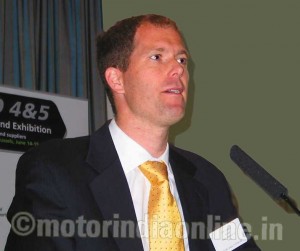AdBlue consumption in Europe is set to treble to over six billion litres in 2025 from just over two billion litres in 2013. This is according to a Base Case forecast prepared by Integer Research as part of its new European Diesel Emissions Control & AdBlue Market Study.

The forecast aggregates consumption from the on-road heavy, medium and light-duty vehicles and passenger cars segments as well as the non-road mobile machinery sector, including agricultural, construction, forestry and mining equipment.
The need for improvement in air quality for the benefit of public health and the environment, has prompted the European Union (EU) to take legislative steps to lower emissions from mobile sources. Stringent nitrogen oxide (NOx) levels have led to the use of after-treatment technologies in diesel-powered vehicles, one of them being Selective Catalytic Reduction (SCR), which requires the use of an aqueous urea solution (AUS 32), referred to as AdBlue in the EU.
The first SCR-equipped trucks were delivered in Europe in 2006, and with the implementation of Euro VI standards for medium and heavy-duty commercial vehicles in 2013, the large majority of these vehicles are SCR-equipped. More recently, introduction of Stage IV for non-road machinery led the majority of agricultural, construction, forestry and mining equipment to adopt SCR systems for after-treatment control. By September 2015, all new passenger car and light-duty vehicles will be required to meet the upcoming Euro 6 standards, and most of them are likely to be also equipped with SCR.
The report offers an analysis of the whole AdBlue supply chain in Europe, including production, distribution, marketing strategies of the key urea suppliers and blenders. It also offers increased granularity into 2013 volumes by region and market shares by company and by region. One of the key findings in this context is that, even though the market has undergone some consolidation over the past few years, and four main distributors now account for 60 per cent of AdBlue sales, it is still fairly fragmented, particularly in South and Southeast Europe.
Pricing is also diverse throughout Europe. Analysis of the pricing structure, freight costs and margins helps explain some of the regional AdBlue price differentials observed over the past few years. “In 2013, AdBlue prices were much lower in Germany than in Scandinavia. There are urea facilities producing AdBlue in Germany and the country also imports the product from other origins, making it a very competitive market. On the other hand, Scandinavia’s reliance on imports of automotive-grade prilled urea is a factor that can put upward tension on end user prices in the Nordic countries”, Cheyne said.
The new study from Integer Research contains essential analysis of Euro VI and the heavy/medium-duty commercial vehicle market, Euro 6 and the passenger car and light-duty markets, as well as the European AdBlue market.
“Truck drivers will remain the main customers of AdBlue over the next decade, and we estimate that approximately 3.5 billion litres will be required by this segment in Europe in 2025. However, a further 2.8 billion litres will be consumed by passenger cars, pick-up trucks and non-road mobile machinery.”
– Mr. Tim Cheyne, Director of Environment & Emissions at Integer Research and author of the new European Diesel Emissions Control & AdBlue Market Study